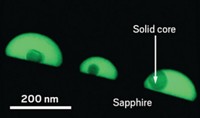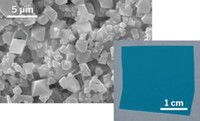Advertisement
Grab your lab coat. Let's get started
Welcome!
Welcome!
Create an account below to get 6 C&EN articles per month, receive newsletters and more - all free.
It seems this is your first time logging in online. Please enter the following information to continue.
As an ACS member you automatically get access to this site. All we need is few more details to create your reading experience.
Not you? Sign in with a different account.
Not you? Sign in with a different account.
ERROR 1
ERROR 1
ERROR 2
ERROR 2
ERROR 2
ERROR 2
ERROR 2
Password and Confirm password must match.
If you have an ACS member number, please enter it here so we can link this account to your membership. (optional)
ERROR 2
ACS values your privacy. By submitting your information, you are gaining access to C&EN and subscribing to our weekly newsletter. We use the information you provide to make your reading experience better, and we will never sell your data to third party members.
Metal-Organic Frameworks
Melted MOF makes perovskites shine
Glass matrix offers stable luminescent perovskites at room temperature
by Fernando Gomollón-Bel, special to C&EN
November 22, 2021

Researchers have melted metal-organic frameworks (MOFs) and mixed them with perovskites to yield highly stable luminescent composites (Science 2021, DOI: 10.1126/science.abf4460). The mixtures resist exposure to heat, air, and humidity, expanding the g possibilities for light-emitting devices.
Lead-halide perovskites, such as cesium lead iodide, naturally exhibit photoluminescence, says chemist Thomas D. Bennett of Cambridge University and the paper’s lead author. “However, this light-emitting phase is only stable at high temperatures, and its effects disappear when the material cools down,” he adds. In the new work, researchers preserved this photoluminescence using MOF glasses to trap this metastable phase at room temperature and, at the same time, encapsulate and protect the perovskite.
“The [MOF] glass matrix stabilizes the luminescent phase of perovskites,” explains Sebastian Henke, a MOF expert at the Technical University of Dortmund. For the first time, MOF glasses “encapsulate a very important class of [perovskite] nanoparticles, . . . protecting [them] from degradation by heat and solvents,” he adds.
“The MOFs form a protective layer by introducing stabilizing interactions,” explains Christine Luscombe, a materials expert at the Okinawa Institute of Science and Technology, who calls the materials’ stability “amazing”
The researchers heated the MOF to 304 °C to form a glass, then sintered it with the perovskite until the two materials intertwined into a composite. Within this blend, the MOF interacts with the perovskite structure, thus preventing the transformation to the non-emitting phase. Photospectrometry experiments showed that luminescence at room temperature is two orders of magnitude higher than in unprotected perovskites. Moreover, durability tests showed the light-emitting devices resist over 10,000 h of water immersion and 650 days stored at ambient conditions.
Researchers tuned the emission color by varying the perovskite’s composition. “This is a well-known effect: tweaking the proportion of halogens in the structure yields different luminescence,” Bennett explains. This could open the door for using the new materials in LEDs and other optoelectronic devices, although there are still obstacles. “MOF glasses [require] relatively high temperatures and inert atmosphere,” explains Henke.
So far, MOF glasses have found applications in batteries, gas separation and water treatment. “This new combination with perovskites opens new possibilities,” Bennett says. “Stabilizing their light-emitting phase at room temperature will foster uses beyond photovoltaics and energy harvesting,” he concludes.
—.




Join the conversation
Contact the reporter
Submit a Letter to the Editor for publication
Engage with us on Twitter